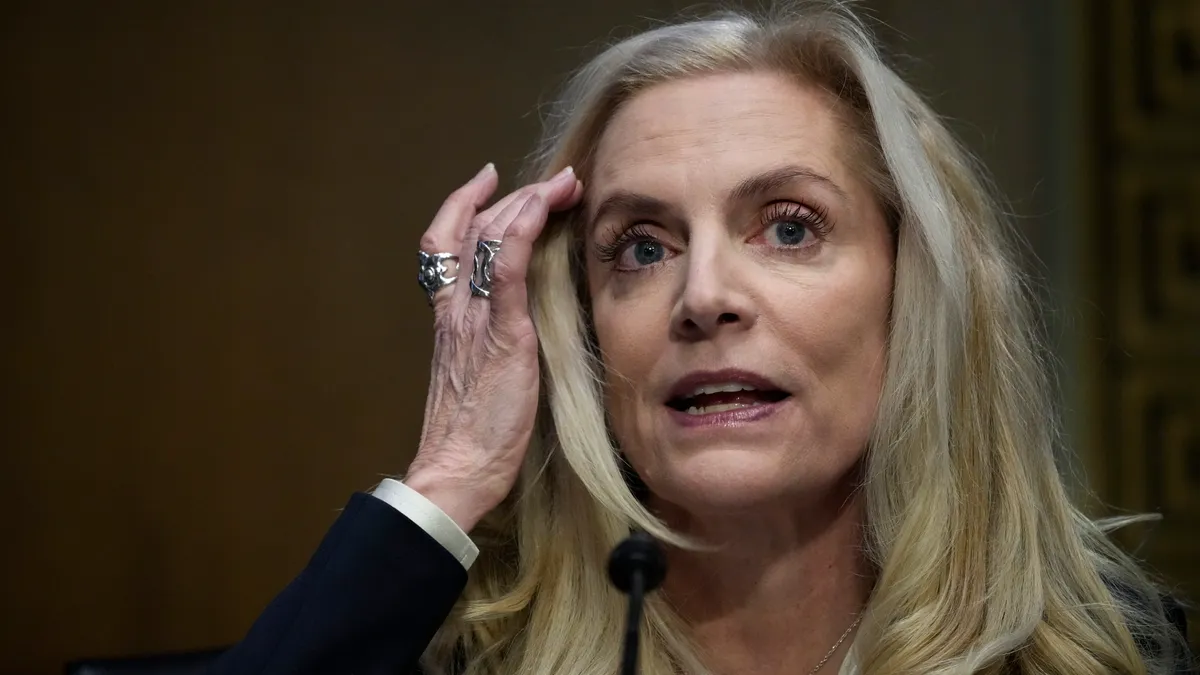Dive Brief:
- Federal Reserve Vice Chair Lael Brainard on Friday said the recent turbulence in the crypto market highlights the need for digital asset regulation.
- Brainard, who was speaking at the Bank of England Conference in London, pointed to Bitcoin’s plunge in value, as well as the demise of the popular U.S. dollar-pegged stablecoin TerraUSD, as examples of why digital assets are in need of “strong regulatory guardrails.”
- Brainard said the May collapse of Terra, which lost its peg, wiping out millions of dollars in a matter of days, was “reminiscent of classic runs throughout history.”
Dive Insight:
Brainard said the Federal Reserve is “closely monitoring recent events where risks in the system have crystallized and many crypto investors have suffered losses.”
But despite significant investor losses, Brainard said she does not think the crypto market is big enough to pose a systemic risk to the traditional financial system just yet.
However, the time is ripe to bring crypto activities into the regulatory fold to help minimize future risk, she added.
“This is the right time to establish which crypto activities are permissible for regulated entities and under what constraints so that spillovers to the core financial system remain well contained,” she said.
The Terra crash, which caused a flood of investors to sell their holdings, serves as a reminder of how quickly an asset that purports to maintain a stable value relative to fiat currency can become subject to a run, Brainard said.
“New technology and financial engineering cannot by themselves convert risky assets into safe ones,” she said.
Brainard said crypto firms need to operate under the same regulatory standards that govern the traditional financial system.
“Future financial resilience will be greatly enhanced if we ensure the regulatory perimeter encompasses the crypto financial system and reflects the principle of same risk, same disclosure, same regulatory outcome,” she said. “By extending the perimeter and applying like regulatory outcomes and like transparency to like risks, it will enable regulators to more effectively address risks within crypto markets and potential risks posed by crypto markets to the broader financial system.”
In her speech, Brainard also touted the benefits of creating a U.S. central bank digital currency (CBDC).
“Given the foundational role of fiat currency, there may be an advantage for future financial stability to having a digital native form of safe central bank money — a central bank digital currency,” she said. “[It] could enhance stability by providing the neutral trusted settlement layer in the future crypto financial system.”
CBDCs could also serve as a “natural evolution of the complementarity between the public and private sectors in payments, ensuring strong public trust in the one-for-one redeemability of commercial bank money and stablecoins for safe central bank money,” Brainard said.
Amid the ongoing volatility of the crypto market, regulators and lawmakers are trying to get a handle on how to best govern and establish safeguards in the sector.
Sens. Kirsten Gillibrand, D-NY, and Cynthia Lummis, R-WY, in June unveiled a bipartisan crypto bill that would give the space a comprehensive regulatory framework.
If passed, the Responsible Financial Innovation Act would expand the role of the Commodity Futures Trading Commission (CFTC) to regulate spot markets for digital assets, and restrict the Securities and Exchange Commission (SEC) to overseeing crypto it classifies as securities.














